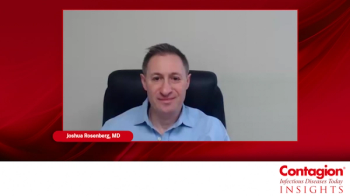
The Challenges of Treating RSV in Children…Without a Vaccine
Steven Varga, PhD, explains why infants and young children are so susceptible to severe respiratory syncytial virus (RSV) infections.
This is part 2 of Dr. Varga’s interview.
We’re hearing about
“I know that RSV garnered a lot of press in the past year,” said Steven Varga, PhD. “I think that was in part because of the disruption of the normal seasonality that’s associated with RSV.”
Varga is a member of the
Varga explained that prior to COVID-19, RSV has a predictable seasonality, starting in the fall and peaking in the winter. At the height of the COVID-19 pandemic, when many people were wearing masks, sanitizing, and adhering to social distancing recommendations, “The number of RSV cases, as well as influenza and many other respiratory viruses, declined precipitously because we were taking measures to prevent the spread.”
As COVID-19 infections decreased, protections were lifted, leading RSV infections to return in unexpected ways. “We saw this large increase in cases that occurred relatively late in the spring and into the summer, and particularly in the geographic southern regions of the US,” Varga explained. “That’s what garnered a lot of the public attention, because it was so off-cycle, and because so many children were falling ill.”
“In very young children, their airways are very narrow because they’re still developing,” Varga said. “They’re much more susceptible to having their airways get plugged by that mucus, particularly in the evenings when they’re lying horizontally.”
RSV is “a ubiquitous pathogen,” Varga said, noting that virtually all children contract RSV by age 3, and adults will unknowingly experience multiple reinfections. However, because COVID-19 preventative practices kept RSV from circulating for several years, many children are now being exposed to RSV for the first time.
This led to high volumes of susceptible children all requiring treatment at once. “The issue with treatment is there aren’t good antiviral treatments that are available that are specific for RSV,” said Varga. The options are either low in efficacy or very expensive, so Varga explained that most of the provided care is supportive, such as oxygen for breathing and fluids to prevent dehydration.
Varga emphasized, “We don’t have a lot of options for treatment, and that’s why the
As more RSV vaccines approach approval, including a
Newsletter
Stay ahead of emerging infectious disease threats with expert insights and breaking research. Subscribe now to get updates delivered straight to your inbox.






























































































































































































































































































































